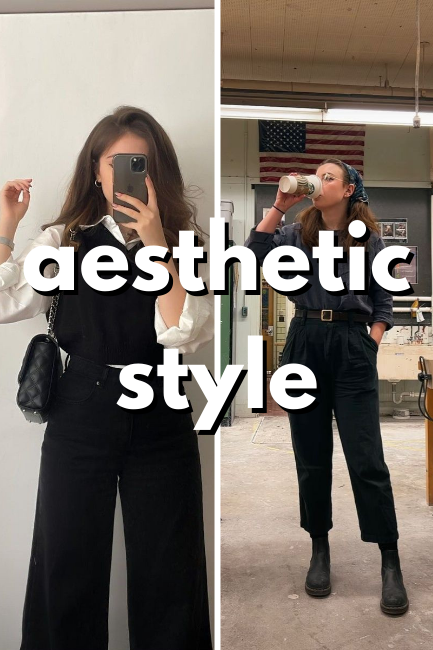
Mastering proportions is one of the most powerful ways to elevate your style. Whether you’re dressing for a special occasion or refining your everyday wardrobe, knowing how to balance your outfit’s proportions can make all the difference.
If you’ve ever felt like something’s off with your outfit, even though it looks great on paper, it’s likely a question of proportions. And guess what? You’re not alone. The art of balancing proportions can turn a good look into a great one, making you appear taller, leaner, and more put-together.
Understanding how proportions work is essential for creating visually appealing outfits, regardless of your body shape or personal style. In this guide, we’ll break down the most effective tricks to get your proportions just right.
From the fit of your clothes to how you pair accessories, you’ll discover styling tips that will instantly elevate your appearance.
Table of Contents
- Understanding the Basics of Proportions
- The Power of the Right Fit
- Balancing Lengths: Top vs. Bottom
- Layering with Purpose
- The Waist: Focus on the Smallest Part
- The Importance of Vertical Lines
- Mixing and Matching Textures and Fabrics
- How Accessories Play into Proportions
- Proportion Tips for Different Body Types
Understanding the Basics of Proportions
Proportions in fashion are all about creating harmony between different parts of your outfit. Think of it like a piece of art: each element (whether it’s your top, pants, or shoes) needs to work together to create a balanced visual. Proportions are not just for tall or thin people – they matter to anyone who wants to look stylish and put together.
Why is it important? Well, when you balance proportions well, you can make your body look more symmetrical, create a longer frame, or even enhance your natural curves. If you’re not sure where to start, don’t worry – let’s dive into the details!
The Power of the Right Fit
Fit is the most crucial factor when it comes to proportions. Clothes that are too tight or too loose will throw off the balance of your outfit. A good fit ensures that your body’s natural shape is complemented without feeling restricted or overwhelmed.
Key Considerations
- Tailored Fit: Opt for clothing that fits your shoulders, waist, and hips properly. A tailored fit helps you maintain a sleek silhouette.
- Avoid Excess Fabric: While oversized clothing is trendy, too much fabric can make you look bulky or out of balance. The key is to create shape without drowning in fabric.
Quick Tip: If you’re in doubt, always go for a more fitted option over something too loose. Well-fitted clothes give you control over how your proportions look.
Balancing Lengths: Top vs. Bottom
One of the easiest ways to enhance your proportions is by playing with the length of your tops and bottoms. Pairing the right length on top with the right length on the bottom can either elongate your legs or create more of a balanced frame.
Top to Bottom Ratio
- Short Tops, High-Waisted Bottoms: This combination elongates the legs and draws attention to the waist. Perfect for those who want to look taller.
- Long Tops, Slim or Cropped Pants: A longer top can balance out tighter, cropped pants, giving a more relaxed yet proportionate look.
Quick Tip: High-waisted pants or skirts are your best friend when it comes to creating a longer, leaner look. Pair them with tucked-in shirts or cropped tops for a balanced silhouette.
Layering with Purpose
Layering is a great way to add interest and dimension to your outfit, but there’s an art to it. When layering, be mindful of how each layer affects your proportions.
How to Layer Right
- One Layer at a Time: When layering, aim for a top layer that’s longer than the inner layer. For instance, a long cardigan over a fitted top can balance out your proportions, making your upper body appear elongated.
- Avoid Bulk: Too many layers can overwhelm your frame. Keep layers lightweight to ensure you don’t add extra bulk where you don’t need it.
Quick Tip: When layering jackets or blazers, make sure the fit is clean and not too oversized. A well-fitted blazer instantly slims the silhouette and defines your waist.
The Waist: Focus on the Smallest Part
Your waist is your natural focal point, and it’s often the best area to focus on when styling outfits for proportions. Highlighting your waist helps define your figure and creates an hourglass shape.
Ways to Accentuate Your Waist
- Belts: Adding a belt, whether at your natural waist or just below it, can break up your silhouette and give your look structure.
- Tucking in Tops: A tucked-in top or blouse adds definition to your waist. If you want to create an hourglass effect, try a fitted shirt tucked into high-waisted pants.
Quick Tip: Avoid low-rise jeans if you’re aiming to accentuate your waist. Higher-waisted bottoms naturally create a more proportionate appearance.
The Importance of Vertical Lines
Vertical lines are a stylist’s secret weapon when it comes to creating the illusion of height and balance. They draw the eye up and down, elongating the body and giving you a streamlined look.
Incorporating Vertical Lines
- Stripes: Thin vertical stripes, especially on shirts or dresses, create a slimming effect. They also give the illusion of added height.
- Seam Placement: Look for pants or skirts with a front or side seam that draws the eye down, creating a more balanced look.
Quick Tip: Vertical lines are most effective when they’re clean and subtle. Avoid overly wide or contrasting stripes unless you want to make a bold statement.
Mixing and Matching Textures and Fabrics
Different fabrics and textures can help highlight different parts of your body. By strategically mixing materials, you can create balance and visual interest, all while enhancing your proportions.
Fabric Placement
- Heavier Fabrics on the Bottom: If you’re looking to balance out a larger top or create more focus on your legs, opt for heavier fabrics like denim or wool for your pants or skirts.
- Lighter Fabrics on Top: Conversely, lighter fabrics such as silk or cotton blouses can balance out heavier bottoms.
Quick Tip: Use contrasting textures to add visual depth. A leather jacket with a soft cotton t-shirt, for example, helps to balance out your look without adding bulk.
How Accessories Play into Proportions
Accessories are the cherry on top of any outfit, but they also play a big role in enhancing your proportions. A well-chosen accessory can elevate your outfit and further balance your proportions.
Key Accessories to Consider
- Scarves: A scarf placed around the neck can add vertical lines, drawing the eye upward and elongating the torso.
- Statement Belts: These are great for defining the waist and breaking up an outfit that might otherwise seem top-heavy or bottom-heavy.
- Footwear: Shoes can play a key role in adjusting proportions. Heels, for instance, not only add height but can also help balance a curvier lower body with a more fitted top.
Quick Tip: Keep accessories in proportion with your outfit. Oversized accessories can dominate a smaller frame, while tiny details might get lost in a larger outfit.
Proportion Tips for Different Body Types
Finally, let’s look at how to apply these styling tips for different body types. Whether you have an hourglass, pear, apple, or athletic shape, these tricks will help you find balance and look your best.
- Hourglass: Highlight your natural curves with fitted tops and bottoms. Accentuate your waist with belts or high-waisted pants.
- Pear Shape: Focus on balancing your bottom half with darker colors or more structured fabrics on the bottom, and lighter, flowy tops to draw attention to your upper body.
- Apple Shape: Create definition around the waist with belted tunics or layered tops. Opt for straight-leg pants to balance out the silhouette.
- Athletic Shape: Create curves by adding volume at the hips and bust. Look for dresses with draping or tops that cinch at the waist for definition.
Quick Tip: No matter your body type, remember that confidence is key. Choose styles that make you feel comfortable and showcase your best features.
Conclusion
Mastering proportions is all about balance – from the fit of your clothes to the length of your tops and bottoms. By focusing on defining your waist, using vertical lines, and layering thoughtfully, you can instantly improve your outfit’s visual appeal. Experiment with textures and accessories, and remember to always dress for your body type. When you find the right balance, your outfits will look effortlessly stylish and perfectly proportioned.
Ready to put these tricks into action? Your wardrobe is about to get a serious upgrade!

